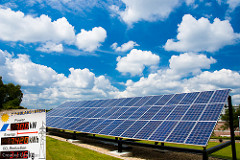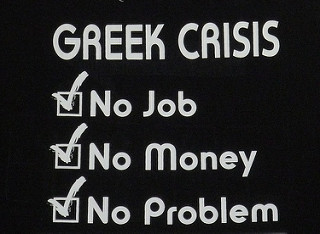The Journey to Solar Power and the Electricity Revolution

Environmentalists have been pushing for widespread solar power use for years because it’s renewable and clean. Much of the resistance they encounter results from an unwillingingness to pay the high initial cost of setting up the solar power infrastructure. Luckily, the cost of solar power won’t be a problem forever. Analysts predict that solar power will be the cheapest form of electricity within a few short years, paving the way for solar power to start an electricity revolution.
Solar Power Is Dropping in Price
A Bloomberg Business report indicates that solar power costs will continue to fall in a number of markets around the world. Analysts are confident enough to predict that this will happen as soon as 2026, but that means the price of solar energy must still drop by 50 percent. The Bloomberg report states that solar power will eventually be so cheap that fossil fuels will no longer be able to compete.
Solar power currently makes up less than 1 percent of net electricity generation around the world, but this number is growing fast. In some areas of the world, solar power advancements are already cost-effective. For instance, in Dubai solar power only costs $.05 per kilowatt. Solar power projects are popping up all over the world, especially in sunny places. Many new solar power farms are under construction in locations like Brazil, India, Uruguay, the U.S., and more.
The Power Production Competition
Coal, which generates 39 percent of power in the nation, is still the front runner for electricity generation in the U.S. It’s followed by natural gas, which generates about 27 percent, and nuclear power, which generates 19 percent. Other renewable energy sources are already ahead of solar power in terms of electricity generation. For instance, geothermal and biomass power represent about 2 percent of the total, and wind power represents 4.4 percent.
Europe is heavily focusing on wind power. Denmark currently generates 140 percent of its electricity from wind turbine farms. While it’s likely that solar power will take off soon, wind power also has significant potential. As renewable energy replaces coal and nuclear power sources, solar power and wind power will serve as the major competitors. Some predict that solar will come out on top because the sun is more reliable and predictable than wind.
Nations Turn to Solar Power
Solar power remains easier to implement than wind power because solar conduits can be placed anywhere while wind turbines require more specific conditions. Right now, Germany leads the way in solar power generation with 35.5 GW, followed by China (18.3), Italy (17.6), and Japan (13.6). The U.S. comes in as number four, but with only 12 GWs. Spain, France, Australia, Belgium, and the United Kingdom are also making strides to implement more solar power infrastructure.
Solar cells already cover many buildings and automobiles, a look that could hint at the future of cities around the world. Solar power is renewable, reliable, and dropping in price, making it a promising power option that will help the U.S. and the world improve the environment and continue to function sustainably.









